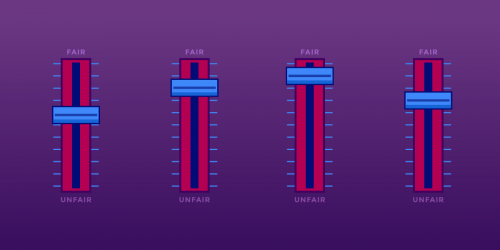Today, the Supreme Court heard arguments in a case that could allow companies to keep a dead hand of control over their products, even after you buy them. The case, Impression Products v. Lexmark International, is on appeal from the Court of Appeals for the Federal Circuit, who last year affirmed its own precedent allowing patent holders to restrict how consumers can use the products they buy. That decision, and the precedent it relied on, departs from long established legal rules that safeguard consumers and enable innovation.
When you buy something physical—a toaster, a book, or a printer, for example—you expect to be free to use it as you see fit: to adapt it to suit your needs, fix it when it breaks, re-use it, lend it, sell it, or give it away when you’re done with it. Your freedom to do those things is a necessary aspect of your ownership of those objects. If you can’t do them, because the seller or manufacturer has imposed restrictions or limitations on your use of the product, then you don’t really own them. Traditionally, the law safeguards these freedoms by discouraging sellers from imposing certain conditions or restrictions on the sale of goods and property, and limiting the circumstances in which those restrictions may be imposed by contract.
But some companies are relentless in their quest to circumvent and undermine these protections. They want to control what end users of their products can do with the stuff they ostensibly own, by attaching restrictions and conditions on purchasers, locking down their products, and locking you (along with competitors and researchers) out. If they can do that through patent law, rather than ordinary contract, it would mean they could evade legal limits on contracts, and that any one using a product in violation of those restrictions (whether a consumer or competitor) could face harsh penalties for patent infringement.
Impression Products v. Lexmark International is Lexmark’s latest attempt to prevent purchasers from reusing and refilling its ink cartridges with cheaper ink. If Lexmark can use patent law to accomplish this, it won’t just affect the person or company that buys the cartridge, but also anyone who later acquires or refills it, even if they never agreed to what Lexmark wanted.
The case will turn on how the Supreme Court applies patent law’s “exhaustion doctrine.” As the Court explained in its unanimous Quanta v. LG Electronics decision, the exhaustion doctrine provides that “the initial authorized sale of a patented item terminates all patent rights.” Meaning, a patent holder can’t use patent rights to control what you can do with the product you’ve purchased, because they no longer have patent rights in that particular object. As we explained in a brief submitted along with Public Knowledge, Mozilla, the AARP, and R Street Institute to the Supreme Court, the doctrine protects both purchasers and downstream users of patented products. Without the exhaustion doctrine, patent holders would be free to impose all kinds of limits on what you can do with their products, and can use patent infringement’s severe penalties as the enforcement mechanism. The doctrine also serves patent law’s constitutional purpose—to promote progress and innovation—by ensuring that future innovators have access to, and can research and build on, existing inventions, without seeking permission from the patent holder.
This isn’t Lexmark’s first bite at the apple. The company first tried to argue that copyright law, and section 1201 of the DMCA (which prohibits circumvention of DRM), gave it the right to prevent re-use of its toner cartridges. In 2004, the Sixth Circuit roundly rejected Lexmark’s copyright claims. The court explained that even if Lexmark could claim copyright in the code at issue, and while it might want to protect its market share in cartridges, “that is not the sort of market value that copyright protects.” The Sixth Circuit also shot down Lexmark’s section 1201 claims, stating
[n]owhere in its deliberations over the DMCA did Congress express an interest in creating liability for the circumvention of technological measures designed to prevent consumers from using consumer goods while leaving copyrightable content of a work unprotected. In fact, Congress added the interoperability provision in part to ensure that the DMCA would not diminish the benefit to consumers of interoperable devices "in the consumer electronics environment."
Having lost on its copyright claims, Lexmark found a warmer welcome at the Federal Circuit, who last year held that so long as the company “restricted” the sale of its product (in this case through a notice placed on the side of the cartridge) Lexmark could get around patent exhaustion, and retain the right to control downstream users’ behavior under patent law.
The Federal Circuit’s ruling in Lexmark seriously undermines the exhaustion doctrine, allowing patent holders to control users’ behavior long after the point of purchase merely by including some form of notice of the restriction at the point of sale. As we’ve said before, this is especially troubling because downstream users and purchasers may be entirely unaware of the patent owner’s restrictions.
The Federal Circuit’s the ruling is also significantly out of step with how the majority of the law treats these kinds of restrictions. While sellers can use contract law to bind an original purchaser to mutually agreed-upon terms (with some limits) for hundreds of years, courts have disfavored sellers’ attempts to use other laws to control goods after a transfer of ownership. Courts and legal scholars have long acknowledged that such restrictions impair the purchasers’ personal autonomy, interfere with efficient use of property, create confusion in markets, and increase information costs. The Federal Circuit’s ruling is even out of step with copyright law, whose exhaustion principle is codified in the first sale doctrine.
We’re hopeful that the Supreme Court will reverse the Federal Circuit and bring patent law’s exhaustion doctrine back in line.








